The Kunsthistorisches Museum (Museum of Art History), also often referred to as the “Museum of Fine Arts,” is housed in its festive palatial building, on the Ringstraße. The term Kunsthistorisches Museum applies to both the institution and the main building.
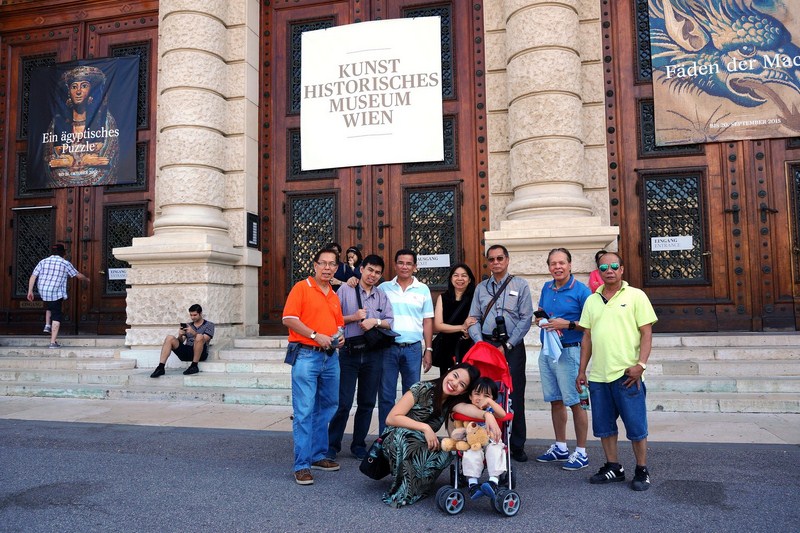
L-R (standing): Popong Flores, Jandy Layug, the author, Grace Layug, Manny Sta. Maria, Freddie Sta. Maria and Isko Dionela. Seated: Cheska and Kyle Layug
It was opened by Emperor Franz Joseph I of Austria-Hungary around 1891, the same time as the Natural History Museum (Naturhistorisches Museum) across Maria-Theresien-Platz.
Check out “Natural History Museum“
The two museums, with identical exteriors, were commissioned by the Emperor in order to find a suitable shelter for the Habsburgs‘ formidable art collection and to make it accessible to the general public.
Both were built between 1872 and 1891 according to plans drawn up by Gottfried Semper and Karl Freiherr von Hasenauer.
This rectangular building, with its sandstone façade, is topped with a 60 m. high octagonal dome. Its interior is lavishly decorated with marble, stucco ornamentations, gold-leaf, and paintings.
Here are some interesting trivia regarding the museum:
- The museum was the subject of Johannes Holzhausen’s documentary film The Great Museum (2014). It was filmed over two years in the run up to the re-opening of the newly renovated and expanded Kunstkammer rooms in 2013.
- The museum appears, in considerable detail, in the final mission of the video game Mafia: The City of Lost Heaven, developed by Illusion Softworks.
- The museum is the setting for director Jem Cohen‘s 2012 feature film Museum Hours. Distributed by The Cinema Guild, it premiered at the 2012 Locarno International Film Festival and was screened in festivals such as the Toronto International Film Festival and Maryland Film Festival.
- The museum’s primary Habsburg collections are from the portrait and armor collections of Ferdinand of Tirol, the collections of Emperor Rudolph II (however, the largest part is scattered) and the collection of paintings of Archduke Leopold Wilhelm.
- The Cellini Salt Cellar, a sculpture by Benvenuto Cellini, one of the museum’s most important objects, was is featured in an episode of Museum Secrets on the History Channel.
- On May 11, 2003, the Cellini Salt Cellar was stolen but was recovered on January 21, 2006 in a box buried in a forest near the town of Zwettl, Austria. It was the biggest art theft in Austrian history.
The collections of the Kunsthistorisches Museum include the Picture Gallery, the Egyptian and Near Eastern Collection, the Collection of Greek and Roman Antiquities, Kunstkammer (Collection of Sculpture and Decorative Arts), the Coin Cabinet and the Library.
Check out “Kunsthistorisches Museum – Egyptian and Near Eastern Collection,” “Kunsthistorisches Museum – Collection of Greek and Roman Antiquities,” “Kunsthistorisches Museum – Picture Gallery” and “Kunsthistorisches Museum – Kunstkammer.”
Kunsthistorisches Museum: Maria Theresien-Platz, 1010 Vienna. Tel: +43 1 525 24- 4902. E-mail: info.ansa@khm. Open Tuesdays – Sundays, 10 AM – 6 PM, Thursdays, 10 AM – 9 PM.
How to Get There: take U1 going to Leopoldau at Keplerplatz, transfer to U2 going to Aspernstrabe at Karlsplatz, exit at Volkstheater.

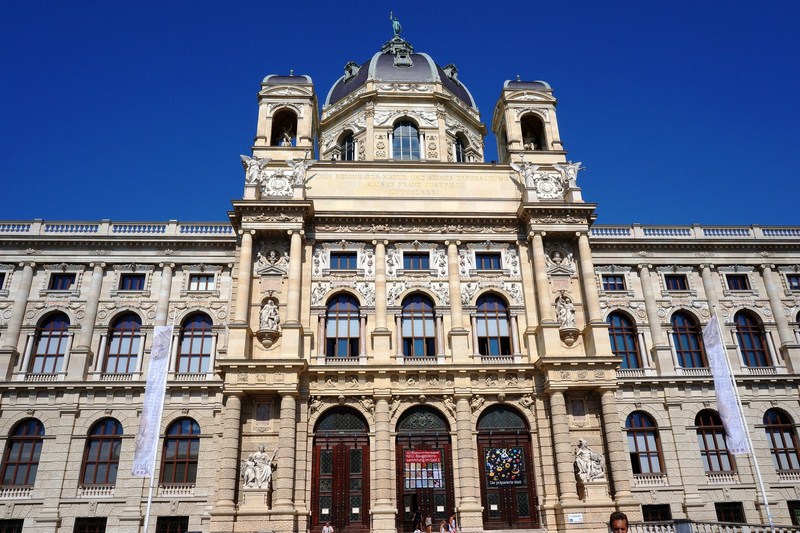
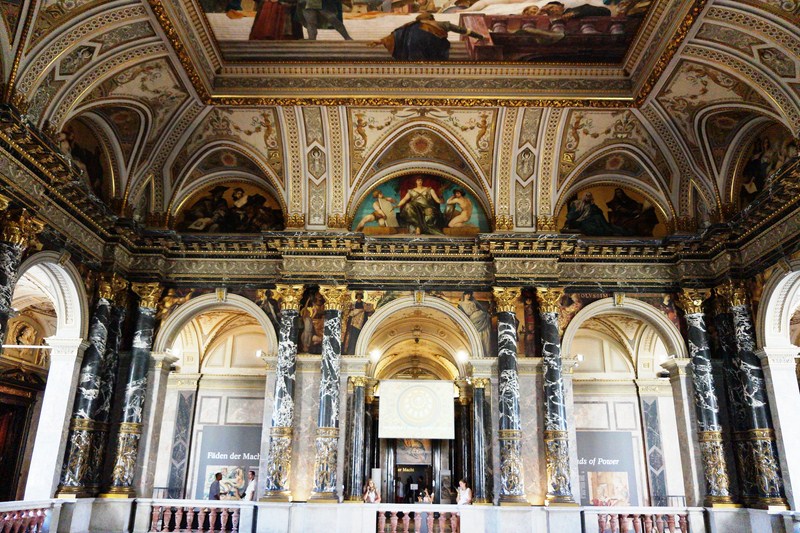
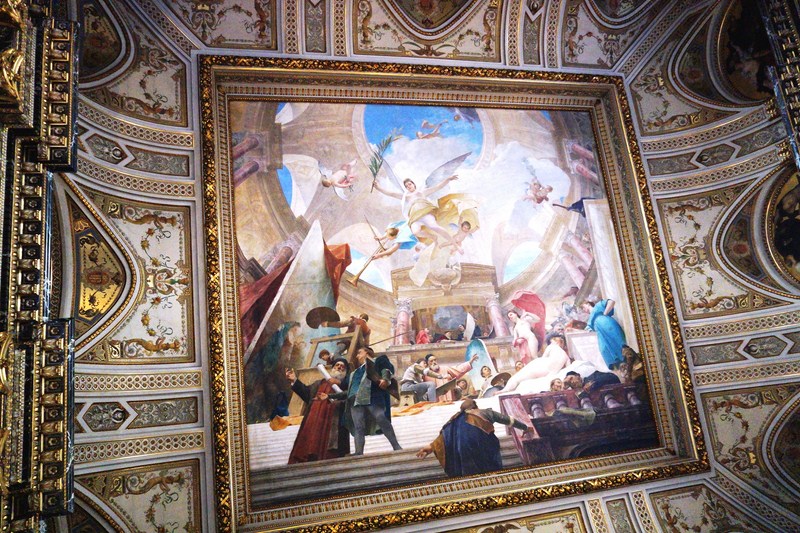
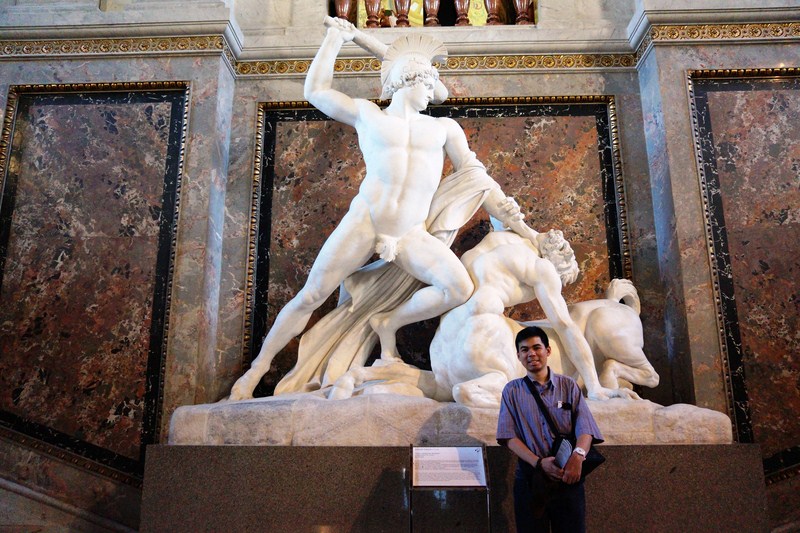
Pingback: Kunsthistorisches Museum – Egyptian and Near Eastern Collection (Vienna, Austria) – B.L.A.S.T. – Live Life to the Fullest ……… Don't Stay Put
Pingback: Kunsthistorisches Museum – Collection of Greek and Roman Antiquities (Vienna, Austria) – B.L.A.S.T. – Live Life to the Fullest ……… Don't Stay Put
Pingback: Kunsthistorisches Mueum – Picture Gallery (Vienna, Austria) – B.L.A.S.T. – Live Life to the Fullest ……… Don't Stay Put
Pingback: Kunsthistorisches Museum – Kunstkammer (Vienna, Austria) – B.L.A.S.T. – Live Life to the Fullest ……… Don't Stay Put